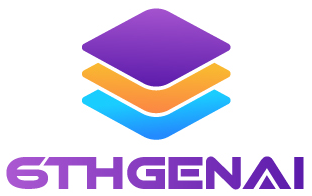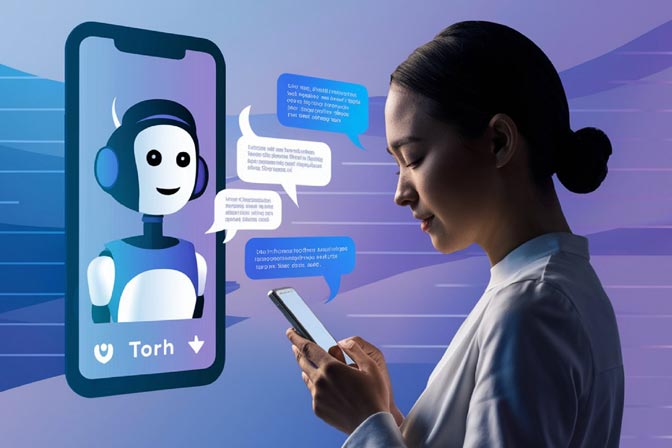Amazon Lex is a service that allows the creation of conversational voice and text intersdaces; thus it is easy to create chatbots where natural language processing (NLP) and Automatic Speech Recognition (ASR) are at the core. With the changing focus of business towards more engaging and customized experiences to the users, it has become imperative to Integrate Lex with Generative AI Services to enhance the functionality beyond that of conventional chatbots.
This article will cover how you can leverage AWS Lex along with creative AI services to design advanced conversation systems with wholescale effectiveness. The integration with advantages from AWS services Amazon Bedrock, AWS Lambda, and Amazon SageMaker, as well as other generative AI models will be explored to show the effectiveness of coupling Lex with advanced AI systems.
Integration with Amazon Bedrock
Amazon Bedrock is a service that AWS has put in place to facilitate the development and enhancement of applications based on AI in its entirety. Using foundation models, such as Claude from Anthropic, as well as Jurassic-2 by AI21 Starters or Titans released by AWS, for instance, Bedrock allows for content generation, text summarizing, and even text creative generation among other things. When Amazon Lex is embedded with Bedrock within a chatbot system, the focus on intelligent responsive skills goes up emphasizing the interactions making it easier like conversations between two human beings.
Key Benefits:
Natural discussion: Offers more relevant and sophisticated replies than those of any syntactic speaking machine bot.
Adaptation: Provides replies which can change according to the user’s demands, preferences and previous intentions.
Content Creation: Facilitates creation on request of text articles, overviews, product reviews and so undertake.
Integration Steps:
Setup Amazon Bedrock: Anscombe’s is the foundation that you select in line with your purpose, for instance, whether you want to generate text or record feedback and other creative responses.
Creating a Lambda Function: After creating a Lambda Function, the next step is to call Amazon Bedrock through AWS Lambda to generate responses, which will be based on user inputs from Lex.
Integrating with Lex: Take the user question, call the Lambda function which puts the question to Bedrock and returns the answer to Lex.
Example Use Case: Consider an e-commerce customer support interface-dedicated chatbot. Upon a simple querying string, such as ‘What can you recommend for a gaming setup?’, the chatbot uses a built-in engine that scans catalog items for appropriate suggestions or definitions.
Integration with OpenAI GPT via AWS Lambda
Many developers use DFX (Dynamic Forms for X) with Lex through AWS Lambda even without Amazon Bedrock for business models available. This configuration helps brim the conversational capabilities of Lex with the ability to self-complete text in a very sophisticated manner as experienced in a human’s GTP.
Key Benefits:
- Exhaustive Knowledge: Due to the vast corpus of data used in training, GPT-3 can provide detailed answers on any subject.
- Creative Output: Writing distinctive pieces, such as brochures, conversations, or other original work, as well as leaping over obstacles such as difficult puzzles.
- Adaptability: Enables taking different approaches and having longer conversations whilst making sure the same context is maintained throughout.
Integration Steps:
- Create a Lambda Function: The function is used to call the OpenAI API by sending the user input to the GPT model.
- API Integration: Connect your Lambda function with a Open AI API in a secure way and work with its outputs.
- Link to Lex: Attach this Lambda function to particular intents in Amazon Lex, which will send users information to be processed by GPT and return a response.
Example Use Case: A travel bot could automatically tailor and offer suggestions for an ideal tourist itinerary for a person (for example “Let me have a 3-day trip to New York – food and museums places only”).
Using Amazon SageMaker for Custom Generative AI Models
For businesses needing specialized generative models, Amazon SageMaker has the functionality of constructing and deploying application-specific AI models. By integrating Lex with SageMaker, it is possible to develop more personalized and focused solutions for chatbots.
Important Points:
- Customization: Use your own data to train your models and receive more relevant answers to the specific domain.
- Flexibility: Apply SageMaker in cases where it is necessary to provide generative models with certain business logic, for example, for writing tenders, creating literary works, or producing recommendations.
- Scalability: Grow or shrink demand automatically through the use of sage maker endpoints.
Integration Steps:
- Train on sage maker: Design and build a Generative AI model using the proprietary data set (example product catalogs, or vocabulary of the sector).
- Deliver the Model: Expose the trained model as a sage maker endpoint.
- Lambda Integration: Develop and Deploy an AWS Lambda function that communicates with the sage maker service, sending user’s Lex queries and properly receiving answers from the model.
- Illustrative Usage: A health-related chatbot could track individual patients’ histories and food preferences to offer suitable diets and physical exercises.
Generative Visual Content with AWS Rekognition and Amazon Polly
Although the majority of generative AI relies primarily on text, it is possible to achieve more dynamic output with the use of Amazon Lex, images with Amazon Rekognition, and speech output with Amazon Polly. This is particularly beneficial for bots that have to deal with, comprehend, or produce images or sounds.
Key Advantages:
- Image Recognition and Reply: Enable the user to upload a picture that Lex will analyze through Rekognition and answer back with comprehensive information or description of the image.
- Voice Conversations: Employ Polly to voice out text-based outputs of the generated conversation so that a voice interactive interface is achieved.
- Multi-Modal Interaction: Deliver engaging experiences that involve artificial intelligence powered voice and visual contents.
Integration Steps:
- Integrate Rekognition: Employ Lambda to carry out the function of processing user provisioned images with the help of Amazon Rekognition.
- Use Polly for Responses: Make use of Polly to transform the text outputs of Lex to human-like voices.
Dynamic Content Creation: Generative AI models for the purposes of producing any text or image input and reformatting it where required.
Example Use Case: An instance where a customer service chatbot could enable a customer to upload a photo of a product defect. The bot uses Rekognition to analyze the uploaded image and creates a precise answer or a set of instructions for fixing the issue, voice outputs being generated by Polly.
Integrating AWS AI Services for Enhanced Understanding
Beyond just generating responses, the integration of Amazon Lex with services like Amazon Comprehend for natural language processing (NLP) and Amazon Transcribe for speech-to-text enhances the chatbot’s ability to understand and generate meaningful, contextually aware responses.
Key Benefits:
- Sentiment Analysis: Using Comprehend, you can gauge user sentiment in real-time and adjust responses accordingly (e.g., offering customer support for negative feedback).
- Entity Extraction: Lex can extract key entities from user input (e.g., dates, names, locations) and pass them to generative models for more accurate responses.
- Speech Recognition: With Transcribe, Lex can handle voice-based input and generate text-based responses, enhancing accessibility.
Integration Steps:
- Add Sentiment Analysis: Use Amazon Comprehend to analyze user input before passing it to Lex, allowing for more emotionally intelligent responses.
- Speech-to-Text Conversion: Integrate Amazon Transcribe to convert voice inputs into text for further processing by Lex and generative AI models.
- Fine-Tuning Responses: Use Comprehend to extract entities and keywords, making the generated content more relevant.
Example Use Case: A customer feedback bot can analyze the tone of the conversation and dynamically switch from offering sales help to addressing complaints, tailoring responses based on the customer’s emotional state.
Conclusion
The combination of Amazon Lex with other generative AI services such as Amazon Bedrock, OpenAI GPT, SageMaker and other AWS services like Rekognition and Polly, allows the firms to create more intelligent, more fun, conversational bots that can deliver creative high-end text output. These integrations facilitate more conversational and dynamic interactions which is very useful in customer support, e-commerce, healthcare, among other industries.
Combining Lex’s powerful NLU and ASR technologies with the invention of the generative AI, simplifies the process of building intelligent chatbots that allows users to hold context-based conversations. With all the customer engagement, content generation and real time assistance solutions, Lex’s attachment with generative AI makes it truly limitless.
- By admin





